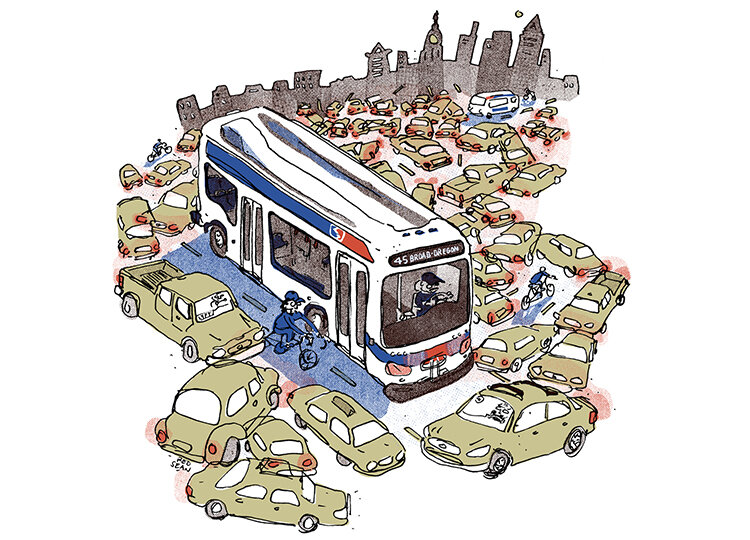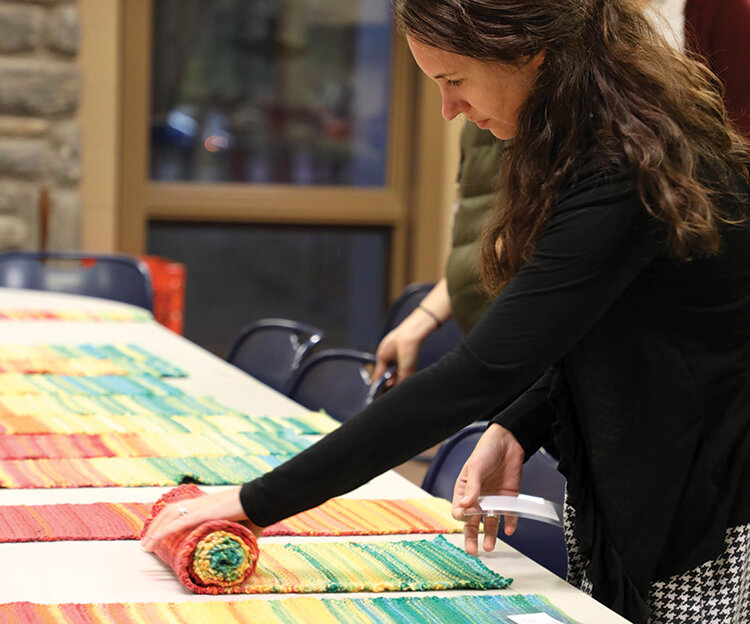Illustration by Sean Rynkewicz
By Randy Lobasso
New York City was in a unique position in 2019.
The city’s legendary subway system was failing and people were upset. At the same time, the city had massive problems with traffic congestion, vehicular violence and carbon emissions. While New York’s politicians could have continued putting Band-Aids on the problems, as politicians often do, they dusted off a decade-old, revolutionary plan designed to tackle all four problems head-on.
In the spring of 2019, New York became the first U.S. city to pass a congestion-pricing program that tolls drivers who opt to enter the Big Apple’s most congested areas. The plan is multi-pronged, but the money raised via the tolling system will reportedly go straight to the Metropolitan Transportation Authority for subway system upgrades and is projected to raise $15 billion by 2024.
The fee has not yet been determined, but it will be imposed on all vehicles traveling on local streets below 60th Street, where the average speed is 4.7 miles per hour; it is expected to be implemented in 2021.
Upon the passage of the legislation in New York, Philadelphia Mayor Jim Kenney showed interest in congestion pricing.
“We always pay attention to policies in other cities to see if they can be adapted to fit Philadelphia’s unique circumstances, and we’ll be watching NYC’s experience with congestion pricing closely to see how this can help improve equity, safety, sustainability and mobility,” Kenney spokesperson Kelly Cofrancisco told The New York Times.
The city of Philadelphia should pay attention to what New York is doing when the fee kicks in in 2021. Whether it’s congestion pricing, or something else like it, Philadelphia will soon have no choice but to enact a policy that reduces private vehicles for the sake of our public transit system, the lives of our citizens and the good of the planet.
Bus ridership has lagged in Philadelphia as additional options—namely, ride-sharing services Lyft and Uber—have allowed anyone to become a taxi driver. Those additional vehicles on our streets every rush hour has led to gridlock traffic in neighborhoods throughout the city. Gridlock leads to unhappy bus riders. Unhappy bus riders lead to more people choosing ride-sharing services, which leads to more gridlock!
This is America. If people want to sit in traffic, they should be able to do that. But we shouldn’t all suffer for it. With all these new vehicles on the road, those of us who use SEPTA to get around are but a cog in a congestion machine. Buses packed with dozens of people are sitting behind single-occupancy cars and empty cabs.
That’s a problem.
Philadelphia has a good public transportation system, and in many neighborhoods, a car is unnecessary. But because we subsidize vehicles, fuel and storage for car owners, it’s not uncommon for Philadelphia residents to own multiple vehicles, store them for free on sidewalks, in no parking zones, in bus zones and in bike lanes—and for those vehicles to remain unticketed. Congestion exists because people are reliant on their cars. If there were fewer cars on the road, your bus would be on time.
Such policies would also uplift the city’s Vision Zero goals. Kenney’s administration has set a goal to bring all traffic deaths and serious injuries to zero by 2030. Such a goal is possible, but not with the city’s current incremental infrastructure implementation. The most obvious change is to get people out of their cars and into a sustainable form of transportation that doesn’t kill 40,000 people throughout the country every year.
A year from now, about 100 people who are currently living in Philadelphia will have had their lives needlessly cut short because of traffic collisions. One hundred families’ lives will change forever.
We shouldn’t put up with this.
Congestion pricing, combined with better infrastructure and banning private and commercial vehicles from certain streets dedicated to people (which New York has also done on 14th Street in Manhattan) would help reduce vehicular deaths simply because there would be fewer people driving.
This is not a point that’s often publicly stated by Philadelphia’s mayor, but we’re kidding ourselves if we think we can continue increasing the number of motor vehicles on our streets while making travel safer for pedestrians, bicyclists and motorists. (Household vehicle ownership increased 6 percent between 2012 and 2017 in Philadelphia, while the population increased less than 2 percent.)
To top it off, the City of Philadelphia has vowed to reduce its carbon footprint. Transportation emissions in the region increased by 22 percent between 1990 and 2017, according to a report conducted by Boston University, and transportation now accounts for 17 percent of the carbon emitted in Philadelphia (the vast majority comes from buildings).
If people in the Philadelphia region know they have to pay every time they bring a car into Center City, it goes without question that some people just won’t bring their cars into the city. They’ll use public transit—and an increasingly improving one at that, with the congestion pricing cash going back to SEPTA—or, as our bike infrastructure improves, they may even choose a bicycle or electric scooter to get around. There are numerous possibilities once you eliminate the incentive to drive a car. Right now, we are on the wrong trajectory. As private vehicle usage increases, so do emissions, traffic violence and accidents and congestion.
The right policies could redefine our city’s relationship with transportation, but in order for that to happen, strong leadership must pave the way.
data-animation-override>
“Congestion exists because people are reliant on their cars. If there were fewer cars on the road, your bus would be on time. ”











I think the freeloaders in the bike group should stop ranting against cars and start ponying up dollars for stuff it wants.
https://gridphilly.com/grid-magazine/2019/8/1/the-road-is-your-road?rq=randy
How much gas tax revenue gets diverted? Lots. How much Turnpike money gets diverted? Lots. Many more. Bike people get far more than they pay.
Make Septa free or super low cost! It’s free to seniors; I know many people who ditched their cars and stopped taking cabs after they turned 65.
Another villain is the construction. It’s rare to take a bus without at least one detour on any given day.